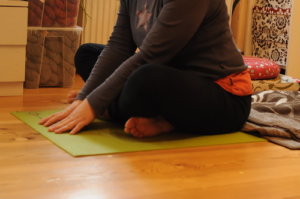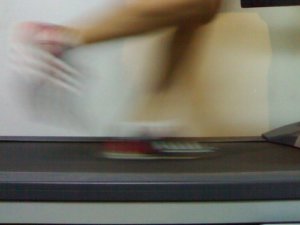
By: Javier Morales
Often throughout movies, television, and new reports the talk about the pelvic floor in is often shushed or pushed away from. Because of this it makes the diagnosis or pelvic floor dysfunction and seeking treatment extremely daunting, so people don’t. Due to the lack of representation in the media, pelvic floor therapy and pelvic floor dysfunctions are not often recognized of importance by doctors which leads to misdiagnosis and mistreatment without recognition of the true causes.
Kegels: One Size Fits All?

By: distelfliege
One of the most common misconceptions that can be heard from the media in relation to the pelvic floor is regarding Kegel exercises, as they seem to be the solution to every pelvic floor dysfunction known to man by the media. Kegel exercises are an exercise that encourages tightening or pulling in your pelvic floor muscles, holding them for a couple of seconds, then releasing them. As mentioned, this seems to be the only therapeutic strategy talked about in the media, so it is assumed that they must be beneficial. This is the case in point for one youtube video linked below from a website revolving around sexual health. The purpose of this video was to verbalize that Kegels are in fact good for every person and every single pelvic floor. Although the argument made by the doctor was convincing, it is not the case according to scientifically proven data. According to scholarly work conducted and written by by K. Jundt, “The investigation and treatment of female pelvic floor dysfunction” treatment for pelvic floor can be seen through therapy services involving magnitude levels of manual therapy as well as exercises determined specifically for you by a pelvic floor therapist. This directly contradicts the statements made by the doctor in the video disproving their theory as it was not backed up by data. The message needs to get out into the media that Kegels are not a one size fits all treatment and a professional should be consulted prior to engaging long term in this exercise, as it may be potentially damaging. It is true that Kegels may be beneficial for some but not all, and this should be accurately represented to the public. The misinterpretation presented by media is leading to a lack of advocacy for receiving pelvic floor therapy services to amend pelvic floor dysfunctions as it pushes for “resolve at home methods”.
https://www.youtube.com/watch?v=wd7UiSCXJGM
Crossfit or “Cross-Not”?

By: Farhad sh
Every few years there seems to be a new exercise trend that has taken the affection of the public, recently it has been a high intensity style of exercise called crossfit. The theory and media representation of crossfit leads to another false truth represented by the media it is said according to a media post written by primewomen.com that “crossfit is the ultimate way to exercise for women” and in a video found on youtube “crossfit women are like superheros” . In the referenced the website “crossfit is needed to prevent illness and is the key to having a stellar mental state”. The references in this website are minimal to none, turning these positive statements into half-truths. What the article doesn’t talk about is the evidence proven effects that high intensity athletics can have on a woman’s body. It does state how this high intensity style of exercise can actually damage the pelvic floor. According to a literature review completed by K. Bo titled “Is physical activity good or bad for the female pelvic floor?”, he states that high intensity sports such as crossfit, gymnastics, or cheerleading can be potentially damaging in a women’s ability to hold in urine during everyday activities. The ability to hold urine using the muscles of the pelvic floor is detrimental to women’s health and when there is appendage to this capability it is called urinary incontinence. The media, particularly health websites such as the one exampled previously, advertise the good of certain exercises or trends to promote wellness among the population of the world which is a good and important thing to do, but if they truly are providing care for the health of these individuals they need to change the way they portray their messages ad include factual information in their promises to the public. An important step in treating pelvic floor is being able to self-identify what may be causing harm to it, and the media is not aiding in this understanding.
Yeast, STD, and Chronic Pain…maybe?

By: Nenad Stojkovic
Another misconception from the media regarding the pelvic floor is one that has an astronomical effect in the way that pelvic floor dysfunction is being treated. Media is ignoring or minimizing that pelvic floor dysfunction may be the cause of the common symptom of pain with sexual intercourse. When the media is not ignoring the issue they are calling it “embarrassing to talk about” according to the CBS interview linked below, which only the issue down to be hidden more. Due to this minimization it often leads to misdiagnoses and unintentional mistreatment by health care professionals due to the fact that they symptoms are often being sold by the media as the result of a sexually transmitted disease (STDs) or yeast infections. Often when an individual is experiencing pain with sexual intercourse, the natural responses is to use google for identifying symptoms. Many websites and media sources including the video linked below titled “Why You Have Pain with Sex” from health.com, will directly state that the symptoms are the cause of a STD or the yeast infection, in which the natural response is to go to the doctor and report the symptoms as they align with the website descriptions. Following the doctor’s visit treatment often in the form of medication is received and there is hope that the pain and the symptoms have gone away. But the symptoms come back, and then the painful frustrating cycle gets repeated over and over until the doctor’s diagnoses the pain as chronic or “brought upon cognitively”, which means “it is in your head”. This cycle is sadly common, when resolutions for symptoms could have been solved by the media accurately reporting these symptoms as pelvic floor dysfunction. According to scholarly article by C. Chen, “Knowledge of pelvic floor disorders in women seeking primary care: a cross-sectional study.”, a commonly identified trend among is that many women do not have previously learned knowledge on pelvic floor dysfunction or what treatment options are available due to an increased fear or uncertainty revolving around the topic. Chen suggest that primary care physicians should provide pelvic floor dysfunction screenings as well as patient education to women during their yearly “check ups” to increase knowledge of the symptoms and possible treatments. This will put healthcare professionals such as primary care physicians, on the same page as the pelvic floor therapists in terms of treatment methods to avoid unintentionally mistreat them. The information gathered and data conducted from this research article considers with the fact of the matter that women are misinformed based upon the media’s representation of pelvic floor dysfunctions just as much as healthcare professionals may be, the process of recovery in pelvic floor dysfunction needs to be one of collaboration between patient and physician, as well as interprofessionally within healthcare.
https://www.health.com/condition/sexual-health/pain-after-sex
(link to health.com video on “Pain after Sex”)
To Recap…
The media in generally is for a majority misinformed regarding the treatment to pelvic floor dysfunction and what classifies as pelvic floor dysfunction and this can cause dilemma in the receival of treatment for individuals suffering with pelvic floor dysfunction. Based upon the research article by Chen it was brought to the general’s knowledge that the health care professionals can be just as misinformed as the public. Generally, pelvic floor dysfunction has been the struggle of many women and the supports have been lacking, but the time for pelvic floor educational growth is in fact changing within the media. Conversations involving the diagnosis of dysfunction and treatment are being put out to the public every single day, which is a good thing for the progression of understanding pelvic floor therapy! Not only is this a good for promotion of treatment but his gives hope for the women that have struggled in the past and the women that will struggle in the future with pelvic floor dysfunction.
Sources and Videos:
Al-Badr, A., Saleem, Z., Kaddour, O. et al. Prevalence of pelvic floor dysfunction: a Saudi national survey. BMC Women’s Health 22, 27 (2022). https://doi.org/10.1186/s12905-022-01609-0
Bø, K., & Nygaard, I. E. (2019). Is physical activity good or bad for the female pelvic floor? A narrative review. Sports Medicine, 50(3), 471–484. https://doi.org/10.1007/s40279-019-01243-1
CBS News. (2014). Pain With Sex, What Women Need to Know? . YouTube. Retrieved November 16, 2022, from https://www.youtube.com/watch?v=LuKgJQQKE3w.
Chen, C.C.G., Cox, J.T., Yuan, C. et al. Knowledge of pelvic floor disorders in women seeking primary care: a cross-sectional study. BMC Fam Pract 20, 70 (2019). https://doi.org/10.1186/s12875-019-0958-z
INTIMINAA collective group of “lady experts” at Intimina who love sharing our personal experiences, . (2013, August 6). Kegel exercise: The most important workout for women. Intimina. Retrieved November 15, 2022, from https://www.intimina.com/blog/kegel-exercises-for-women/
Jundt K, Peschers U, Kentenich H. The investigation and treatment of female pelvic floor dysfunction. Dtsch Arztebl Int. 2015 Aug 17;112(33-34):564-74. doi: 10.3238/arztebl.2015.0564. PMID: 26356560; PMCID: PMC4570968.
Migala, J. (2022, September 25). What is pelvic floor massage? Health. Retrieved November 15, 2022, from https://www.health.com/condition/sexual-health/pelvic-floor-therapy
Wagner, M. (2021, May 24). Why crossfit for women is a great idea: Prime women. Prime Women | An Online Magazine. Retrieved November 15, 2022, from https://primewomen.com/health/fitness/crossfit-for-women/
ZoomDekho, . (2018, October 13). Reasons why women should take up Crossfit for fitness | why choose Crossfit workout? YouTube. Retrieved November 16, 2022, from https://www.youtube.com/watch?v=EhJgdSlH-4I
